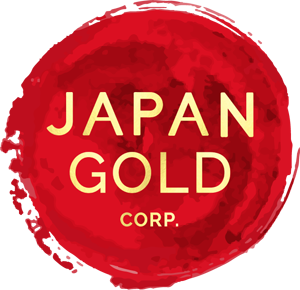Geology and Mineralisation
The gold mineralization styles within the Sanru Project are classified as rift-related, low-sulfidation epithermal. Mineralization is typically associated with quartz-chalcedony-adularia-sericite±calcite in silicified and veined- or brecciated-structures, including dark sulfidic material, termed ginguro bands. The Sanru mine, located immediately west of the project area, is hosted within the Miocene Sanru sedimentary sequence that is interpreted to be contemporaneous with rhyolite lava prevalent in the project area.
The Sanru deposit, located just outside Japan Gold’s tenement, occurs at an east-west flexure along an east-northeast-trending dextral fault which extends into the application area towards the historic Jugosenzawa mine workings. The major Honpi vein dips 50° towards the southeast with rhyolite breccia in the footwall and black shale in the hangingwall. Bonanza grade ore-shoots typically occur at bends in the vein, with six such zones mined and recorded with dimensions of up to 200 m length and 30 m width. The Juji-hi vein strikes perpendicular to the main trend and is reported to have produced the highest average grades in the mine (25 g/t Au) over a vertical extent of about 90 m1 (the raw data upon which these gold values and dimensions are based is unavailable).
Japan Gold’s Sanru Project covers a total of five known mine workings that are inferred to be fault-controlled with potential to host similar mineralisation as exploited in the Sanru Mine.

